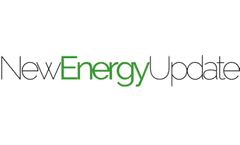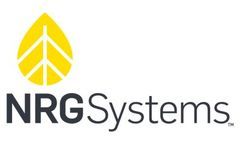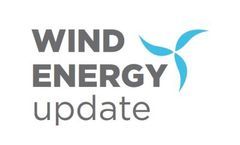Wind Resource On Large Sites Articles & Analysis
26 articles found
In the wind industry, wind speed historical data are used by the resource assessment teams to study the wind potential of a site and estimate the power that could be generated by wind turbines. ...
The integration of renewable energy sources into electricity generation poses major challenges for existing electricity networks because they were previously geared towards the operation of centralized large-scale producers. A promising way to increase the security of supply in decentralized power grids is to produce green hydrogen. Hereby, smoothing out peaks in supply and demand can be ...
Utility-scale engineering and construction projects are inherently risky. Large numbers of people independently working on a site, out in the weather, around dangerous machinery large and small, racing to finish the project as quickly as possible. Most Engineering, Procurement, and Engineering (EPCs) in the solar industry have the personnel safety issue solved. There are ongoing, sophisticated ...
Key features of the site include strong wind speeds and the high capacity power lines which run parallel to the site. ...
The oldest rotary windmills are considered to have been used regularly in agriculture and other purposes since 2000 B.C. by peoples of what would today be China and the Middle East who already sensed what the German physicist Albert Betz, the father of physics governing modern wind turbines, called The Theory of Wind Energy, presented and published in his book “Wind-Energie” at the ...
Interior have benefited from more favorable wind resources, large areas of flat land which can accommodate large-scale projects, and transportation access to growing regional manufacturing hubs, the U.S. ...
Ageing wind assets, growing corporate demand and limited appetite for full repowering are favoring lifetime extension projects, increasing the importance of performance analysis. European lifetime extension (LTE) activity is set to hike in the coming years as feed-in tariffs expire and wind operators seek to maximize revenues from ageing assets. Around 4 GW/year of European wind turbine ...
Vattenfall has arranged the finance to build a new hybrid project in the Netherlands, investing €35 million to add solar and battery components to an under-construction wind site. The €61 million Haringvliet hybrid site on Goeree-Overflakkee in South Holland will comprise 22MW of wind capacity, 38MW of solar and a 12MWh battery. It is the first time Vattenfall will have combined all ...
A$850M: Project Cost 1,510,000MWh: Expected low Emission Contribution 123: Turbines installed 453MW: Generation capacity Coopers Gap Wind Farm is a 453MW wind energy project to be located at Cooranga North, approximately 180kms north-west of Brisbane, Queensland. Upon completion in 2019, it will be Australia’s largest wind farm. The site was identified by Windlab’s WindScape ...
4,925,563 MWh: Low Emission Contribution 206MW: Generation Capacity A$750M: Project Cost 111: Turbines Installed Windlab identified the site in 2006 from a WindScape high resolution map of the state, coupled with its Virtual Wind Farm technology. Collgar is a world leading wind farm site located on accessible wheat belt land with uncontested high quality grid access. The project was ...
422,472 MWh: Low Emission Contribution 29MW: Generation Capacity 17: Turbines installed Bull Creek Wind Project, in western Alberta, represents the first of Windlab’s projects to reach operations in North America. The site was first identified by Windlab in 2007 and the land was quickly secured. Windlab sold the project to BluEarth Renewables in 2011, who then continued the ...
“Usually project developers will just choose the site with the least levelized cost and best wind speeds, but in reality those aren’t the best sites,” Deshmukh said. ...
"South America has a unique renewable energy resource base since one of the best wind sites globally is in Patagonia, the best solar energy sites are in the Atacama Desert, hydro power is already used in large amounts and the sustainable biomass potential is significant. ...
The recently released "Evaluation of Site-Specific Wind Conditions v 2.0" (MEASNET 2016) largely mirrors DNV’s earlier recommendations, and it especially cautions against short ( In "Shorter Wind Measurement Campaigns: Speeding up Wind Farm Development with Lidar" (EcoFys 2013), it is estimated that a ...
To select the right offshore wind site, estimate the future energy output of a wind farm, and determine the best layout for the turbines, project developers must conduct wind resource assessment (WRA) campaigns on site. ...
UK offshore load factors accelerate on tech breakthroughs: 10-year study The Crown Estate’s Offshore Wind Operational report 2015 shows there has been a gradual increase in the load factor for the UK fleet since 2004 on the back of more productive wind turbines, wind farms being built at windier sites and improved plant availability. The Crown Estate manages UK sovereign assets such as ...
A heritage site is a location that is important to the cultural or historical heritage of a town, city or country. Wind turbines are large devices used to generate renewable energy. Both equally important, but when pitted against each other lawyers have decided that heritage sites are more important than renewable energy. The matter was brought to light in January, when a wind farm company ...
Introduction In the late 1990’s wind turbines with nacelle heights exceeding 60 meters were introduced to the wind energy community. Initially, wind prospecting and siting studies continued to use 50-meter wind towers and extrapolate the measurement to the nacelle heights. It was quickly determined that this approach was not sufficient for the placement of these tall turbines. The next ...
This paper proposes a methodology for sitting and sizing wind distributed generators (WDGs). These generators are characterised by an uncertain active power production due to the random behaviour of the wind speed. The uncertain generation directly impacts the network total generation cost and also the solution for the placement and sizing problem. So, this work takes into account this uncertain ...
In this paper, a methodology for sizing of hybrid photovoltaic-wind power generation (HPVWPG) system is described. The purpose of this methodology is to predict the PV-generator area, the capacity of the battery and the capacity of the wind generator in isolated (remote) areas, where the meteorological data (solar irradiation, air temperature, wind speed, etc) are not always available. For this ...














